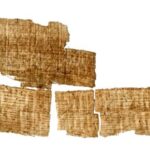| Artefact ID | 534 |
| TM ID | TM 33567 |
| Findspot (DEChriM ID) | 55 (Qarāra) | Class | Textual |
| Material | Papyrus |
| Writing medium | Sheet/roll |
| Text content | Documentary |
| Language | Greek |
| Archive/Dossier | Archive |
| Description | P.Neph. 14: Fragment of a letter to Nepheros This fragmentary papyrus contains the right-hand line ends from the conclusion of a letter to Nepheros. |
| Selection criteria | Mention of Christian cult officials/institutions, Mention of Christian individuals/communities, Christian terms/formulas/concepts |
| Date from | 350 |
| Date to | 370 |
| Dating criteria | Palaeography, archive connection and historic context led the editors to suggest a range of date around 360 for the Nepheros correspondence (Kramer and Shelton 1987: 5). According to the study of the prices mentioned in the archive, Bagnall 1989: 75 (= BL IX, 173) suggests a range after 352. |
| Absolute/relative date | Relative date |
| Archaeological context | The P.Neph. were bought on the market but according to the seller they were all found together. Nothing in the archive led the editors to doubt this statement and they add that the archive were probably found in the direct vicinity of the ancient location of the monastery of Phathor (see Kramer and Shelton 1987: 5). |
| Accession number | Trier, University Library, P.UB Trier S 073-09 -26 73-2 + 73-9(6) + 73-20(b)
|


 Json data
Json data





